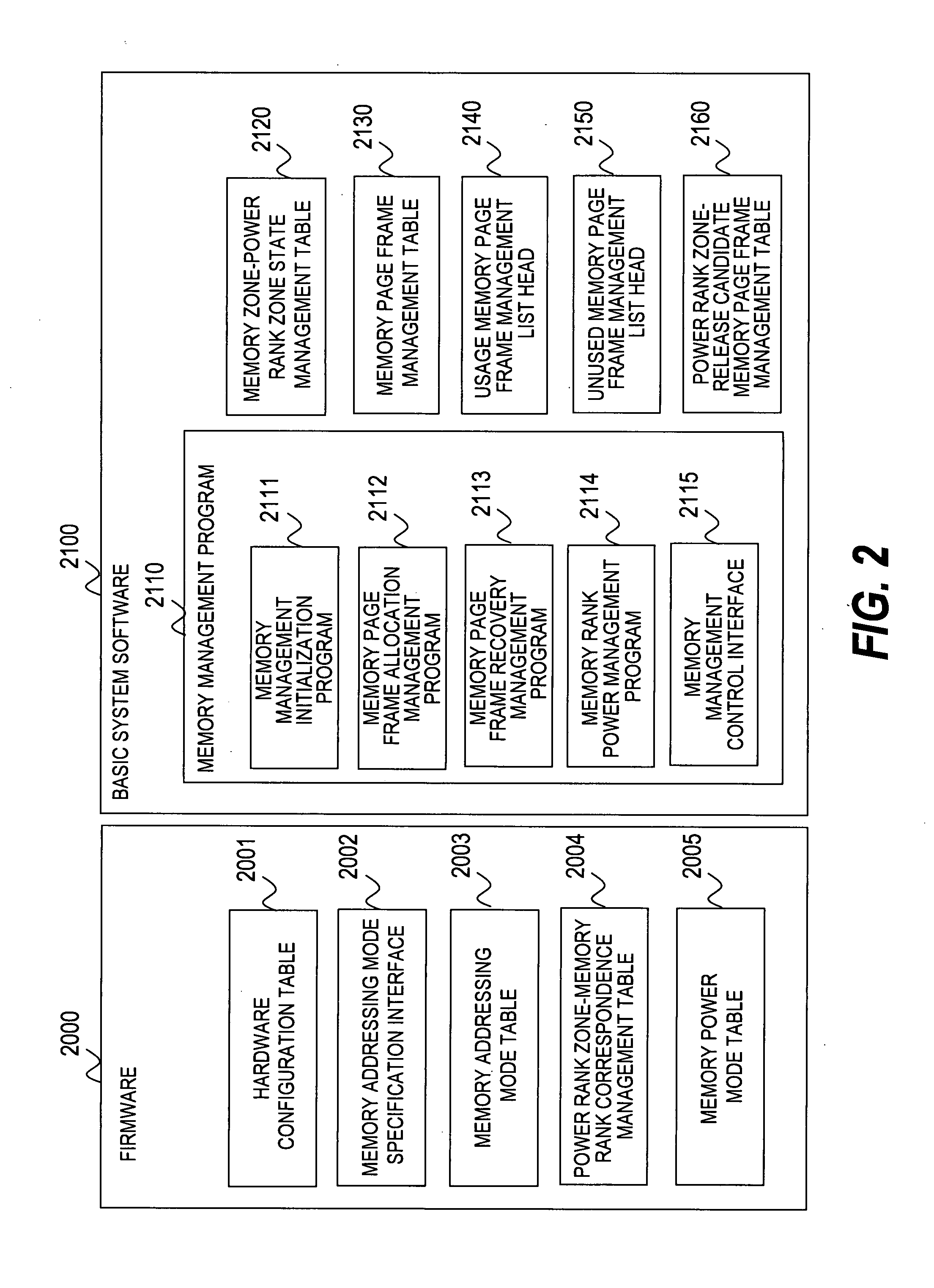Power consumption decrease memory management method
a memory management and power consumption technology, applied in the field of memory management methods, can solve the problems of ineffectiveness, difficult to realize effective low power control only at hardware without cooperating with basic system software, and difficult to reduce the power consumption of memory until today, so as to reduce the power consumed by memory largely and reliably.
- Summary
- Abstract
- Description
- Claims
- Application Information
AI Technical Summary
Benefits of technology
Problems solved by technology
Method used
Image
Examples
first embodiment
[0046] A first embodiment of the invention will now be described referring to FIG. 1 to FIG. 14.
[0047]FIG. 1 is a schematic diagram of a computer system according to the first embodiment of the invention.
[0048] The computer system according to the first embodiment of the invention is provided with computers 1000 to 1001, a keyboard 1190, a mouse 1200, a display 1170, and secondary storages 1180 to 1181. The keyboard 1190, a mouse 1200, a display 1170, and the secondary storages 1180 to 1181 are connected to one or plural computers 1000 to 1001.
[0049] The computer 1000 comprises processors (CPU) 1010 to 1011, a memory controller 1020 to 1021, memories 1030 to 1060, a system ROM 1100, a video adapter 1110, network interfaces 1120 to 1121, secondary storage interfaces 1130 to 1131, and an input device interface 1140.
[0050] The processors (CPU) 1010 to 1011, memory controller 1020 to 1021, memories 1030 to 1060, system ROM 1100, video adapter 1110, network interfaces 1120 to 1121, s...
second embodiment
[0264] A second embodiment of the invention will now be described referring to FIGS. 15 to 17.
[0265] In the second embodiment of the invention, the case of a power consumption memory control different from that of the first embodiment will be described when the computers 1000 to 1001 form a Numa system.
[0266] A Numa system is a system wherein the computer 1000 is connected to another computer 1001 via a node controller 1090 and the internode bus 1160, and the CPUs 1010 to 1011 of each computer 1000 to 1001 can access the memory of each computer 1000 to 1001. In general, the speed with which the CPUs 1010 to 1011 access the memories 1030 to 1060 of the same computer, is faster than the speed with which the CPUs 1010 to 1011 access the memories 1030 to 1060 of another computer.
[0267] In the first embodiment, the memory management program 2110 of the basic system software 2100 manages the memory 1030 to 1060 resources by the zones of the memories 1030 to 1060, and the memory 1030 to...
PUM
 Login to View More
Login to View More Abstract
Description
Claims
Application Information
 Login to View More
Login to View More - R&D
- Intellectual Property
- Life Sciences
- Materials
- Tech Scout
- Unparalleled Data Quality
- Higher Quality Content
- 60% Fewer Hallucinations
Browse by: Latest US Patents, China's latest patents, Technical Efficacy Thesaurus, Application Domain, Technology Topic, Popular Technical Reports.
© 2025 PatSnap. All rights reserved.Legal|Privacy policy|Modern Slavery Act Transparency Statement|Sitemap|About US| Contact US: help@patsnap.com



